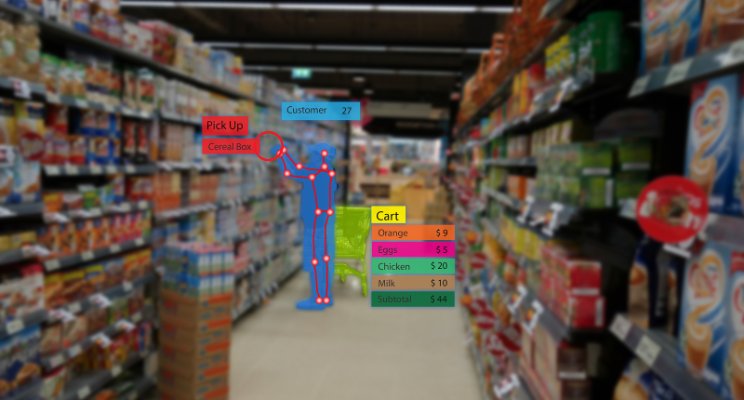The new cashierless Amazon Go store is open for business in Seattle, and it could revolutionize the way we shop. At least that’s what some people think. Personally, I’m not so sure.
Amazon Go is an 1800 square foot market, with a mix of prepared foods, typical convenience store merchandise and the kinds of grocery items you’d normally find at Whole Foods, which Amazon also owns. At the front of the store, where you’d usually find checkout lines, there is a bank of electronic turnstiles. You can only pass through the turnstiles and into the store if your smartphone is loaded with Amazon Go’s app.
There are no cashiers at Amazon Go, nor are there shopping carts. Instead, you place items directly into the same shopping bags you will take home. Every time you pull an item off the shelf, it’s added to your Amazon shopping cart. When you pass through the turnstiles on your way out, you are automatically checked out. “Sophisticated computer vision and machine learning software” makes all this possible, according to Amazon.
Amazon Go Eliminates Pain Points, But Will People Like It?
There’s no question that long checkout lines are a pain point for shoppers. Ordinarily, anything that eliminates a pain point is a step in the right direction as far as the customer’s experience is concerned. But I have issues with any approach that takes humans out of the interaction altogether. What if you need help? What if there’s a glitch in the technology?
Amazon claims to have solved the human-free issue by reassigning employees to other roles in the store, including stocking shelves, helping customers find items they need, and resolving technology issues. If Amazon Go really is well-staffed by smiling, helpful employees, this could lead to more positive interactions between employees and shoppers and therefore a better customer experience than if there were traditional cashiers.
If I lived in Seattle, I’d be eager to give it a go. But, as I said, I am not sure people will ultimately prefer the cashierless experience. I say this partly because many American supermarkets also have a cashierless option, but most people will wait in line for a cashier rather than use it. That includes me, because I find self-check lanes finicky, and ringing up produce is sometimes complicated or not as easy as it should be. Plus, I hate the robotic voice constantly reminding me to place the checked item in the bag!
A Human-Free Approach May Not Be the Answer
The problem with technology solutions is that they can overlook some of the emotional and subconscious factors that underlie our shopping decisions. Yes, we hate waiting in a checkout line. But that doesn’t mean we hate cashiers, or that we want to haul 12-packs of soda around the store in a bag instead of a shopping cart.
One of the most important things we teach in our customer experience consultancy is that customers’ feelings and subconscious factors are the biggest influencers of customer behavior. We often say that customers — and humans in general – are irrational. If you base your customer experience on rational ideas like efficiency without considering the real reasons for your customers’ behavior, you won’t have a winning customer experience strategy.
Let me give you an example. At our house in England, we used to have our milk delivered to our door. It would have been just as easy (and probably cheaper!) to buy it at the store with our other groceries, but my wife Lorraine enjoyed chatting with the milkman when he came by every week to collect payment.
Then the dairy switched us to a new milkman who had a more efficient system. He’d leave us a bill on the doorstep with instructions to leave him a check the next day. He assumed this would save us both time, which is true. But that wasn’t what mattered to us – we only had the milk delivery because we liked interacting with the milkman. When the new fellow took that out of the equation, we stopped the delivery and the dairy lost our business.
Will Amazon Go’s employees humanize an experience driven by technology? Will the store be a hit, or a novelty whose allure soon wears off? Is cashierless shopping going be the future of retail? I’m looking forward to finding out.
Would you shop at Amazon Go? Tell me why – or why not – in the comments section below.
If you liked this article, you might also enjoy these:
Is a “Human Free” Experience the Future?
Be Warned: You Can’t Rely on Big Data!
It’s Essential: Understand Your Customer’s Habits!
Colin Shaw is the founder and CEO of Beyond Philosophy, one of the world’s leading Customer experience consultancy & training organizations. Colin is an international author of six bestselling books and an engaging keynote speaker.
Follow Colin Shaw on Twitter @ColinShaw_CX and .Follow Colin Shaw on Twitter @ColinShaw_CX and on the Intuitive Customer Podcast.


